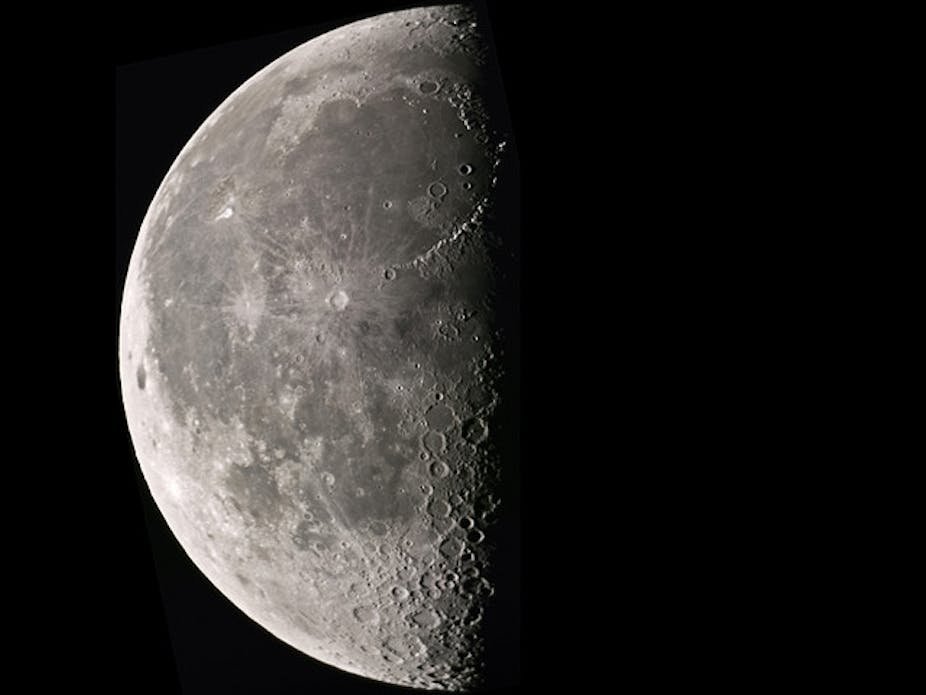Curtin University researchers have identified 280 new lunar craters, a development they say could help boost our understanding of the origin of the moon.
In a new paper published in the Journal of Geophysical Research: Planets, the researchers described using a technique called “gravity mapping” which tracks the movement of satellites to make calculations about surface terrain.
“As a satellite passes over a set of dense lunar rocks, it gets pulled toward the moon, so by tracking its orbit, scientists can deduce the gravity field of the moon. We also looked at the shape of topography and, together with the gravity, made our deduction,” said lead author of the new study, Professor Will Featherstone of Curtin’s Institute for Geoscience Research.
“If you have something that looks like an impact basin with a gravity anomaly, then it is likely it really is an impact crater.”
The team identified 280 craters, 66 of which are distinctly visible from both gravity mapping and a topographic perspective.
Professor Featherstone said the team had originally developed the techniques for applications for Earth.
“I noticed similar data sets had been released for the moon. It was one of those cases of saying ‘Hey, why don’t we try this on the moon?’”
Professor Featherstone said that while technique was reasonably effective on the moon, it might not be so effective on the larger planets.
The team now plans to use data from NASA’s GRAIL laboratory to verify the newly identified basins and possibly find more.
“Of those 280, we call them candidate basins; we’re saying these are worth looking at further.”
Professor Featherstone hopes their findings will aid lunar scientists with their work on the moon.
“It adds to our knowledge about the moon. It helps us understand the history of the moon and our solar system in general.”
The far side of the moon
Jonti Horner, Post Doctoral Research Fellow at University of New South Wales, said the new paper was very interesting.
“There is a huge amount of evidence that the moon has been pummelled by impacts throughout its life, ranging from the vast to the tiny,” said Dr Horner.
The near side of the moon has been thoroughly studied, Dr Horner said, and scientists once thought the far side of the moon – the section that faces away from Earth – would be similar.
“So when the first images of the far side of the moon came back from the Russian mission Luna 3, back in 1959, it was a real shock to learn that the far side looks very different to the near side,” said Dr Horner.
Scientists now think that the crust on the near side is thinner than that on the far side, so the big impacts on the near side pierced the moon’s molten interior, releasing flood basalts then poured out and creating the dark surface (called the lunar mare) that we see today, he said.
“On the moon’s far side (for whatever reason), the crust was thicker, so the flood basalts didn’t occur. Although we know a huge amount about the easily observed near side, the impact story of the moon’s far side is still something we’re learning about - and that’s why this work is really interesting to me.”
Heavy bombardment
Dr Horner said that “the more we can learn about the number of impacts the moon has suffered over the aeons, the better we can understand the impact regime on the Earth - which has certainly played a role in the evolution and extinction of life.”
Discovering more of these basins may also help clarify the truth or otherwise of the “Late Heavy Bombardment”, a theory that suggests that many large objects crashed into the moon, Earth, Mars and Venus around four billion years ago.

